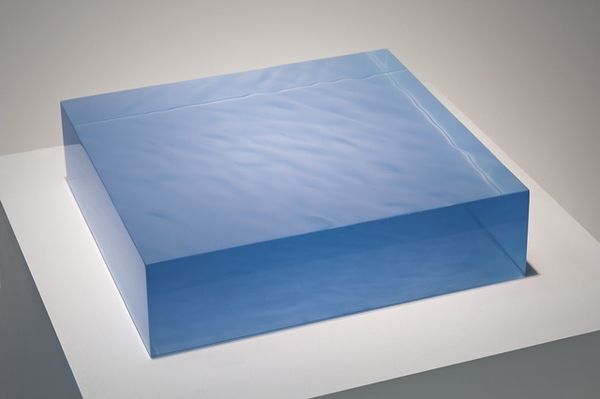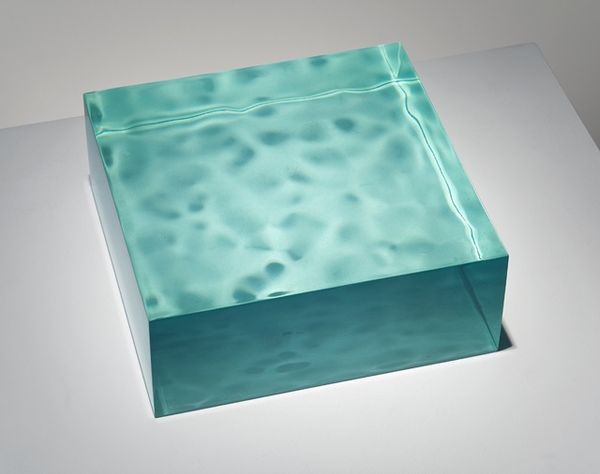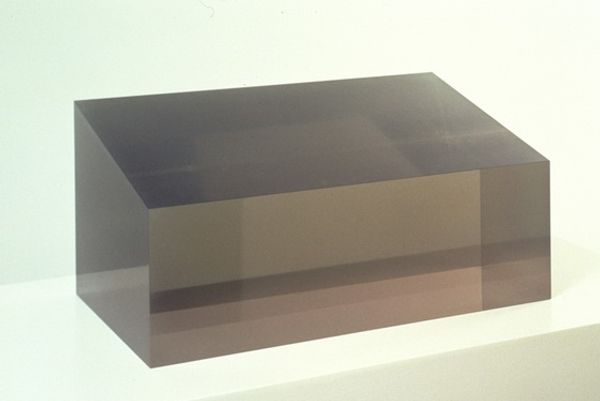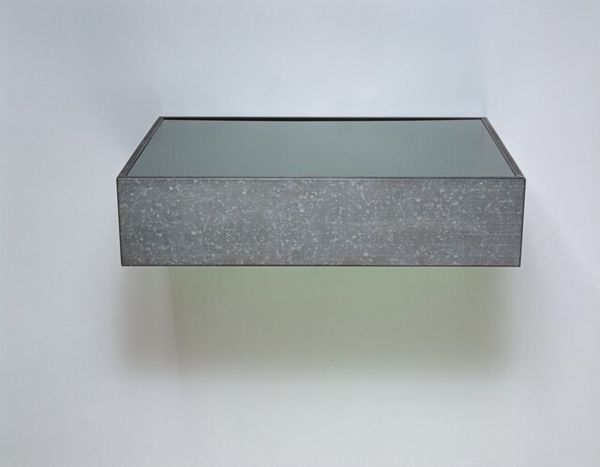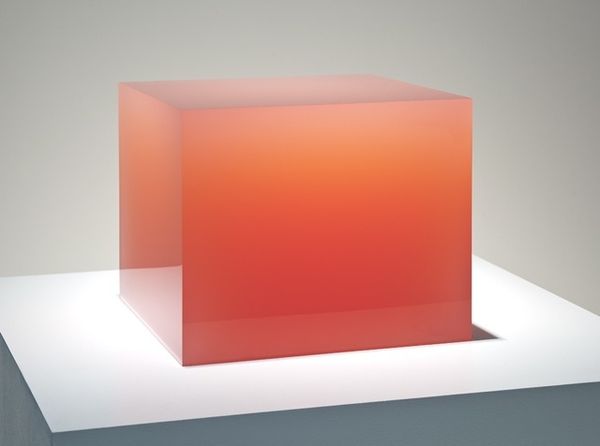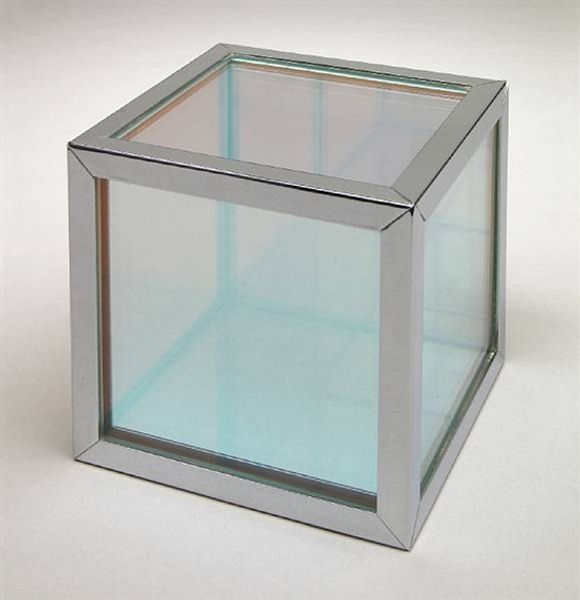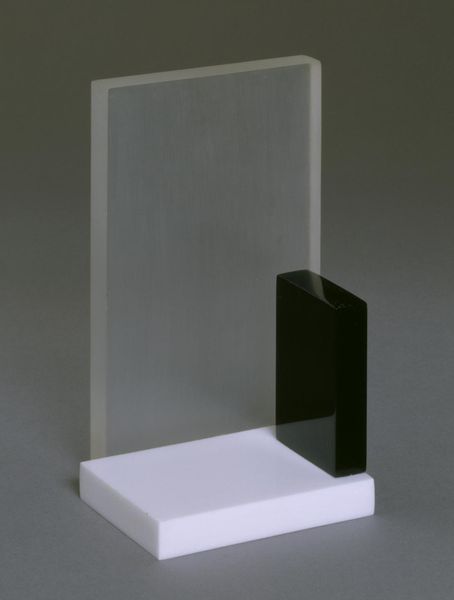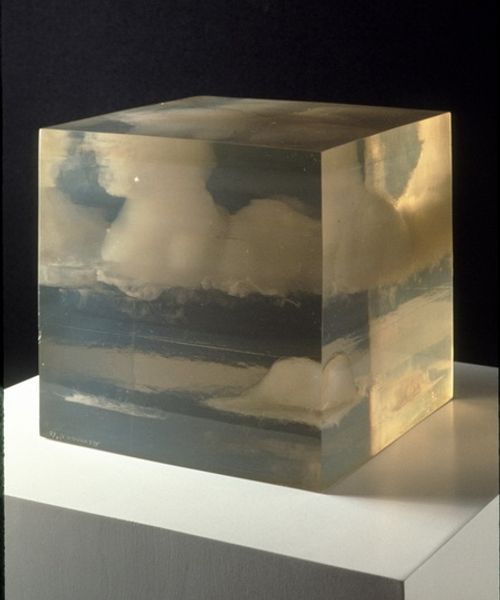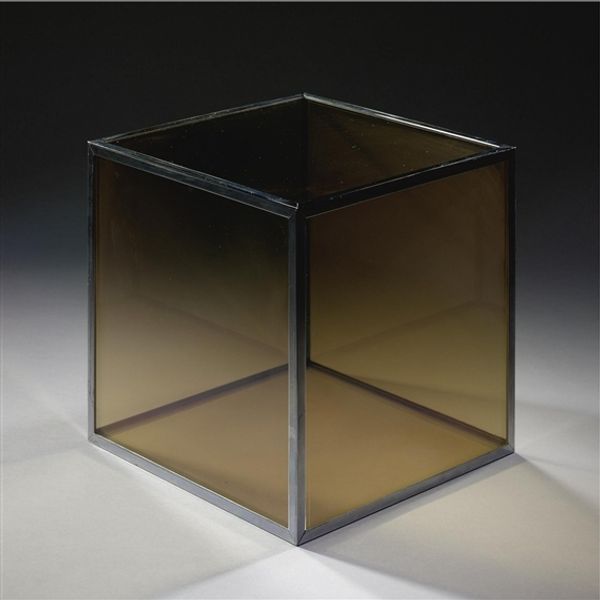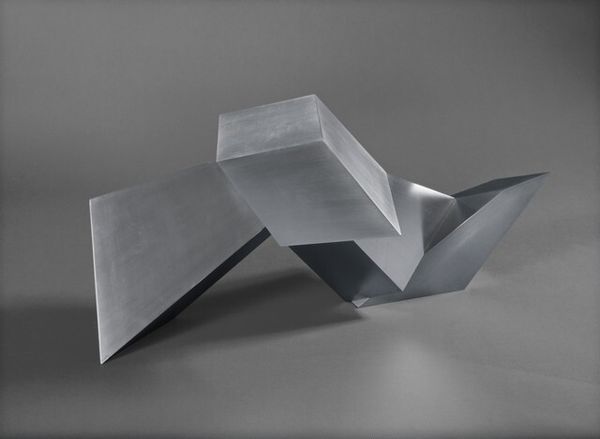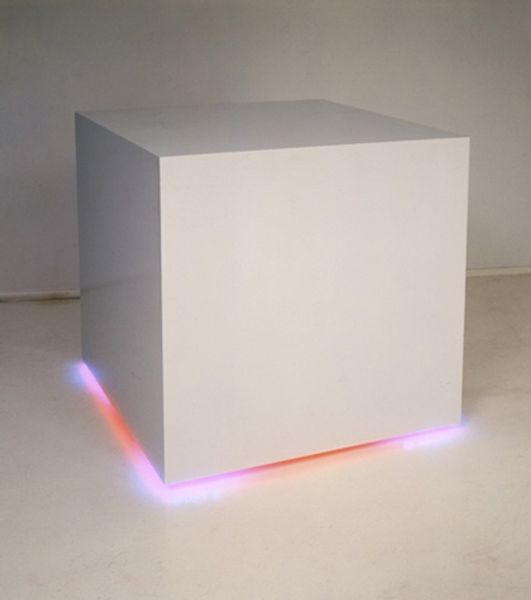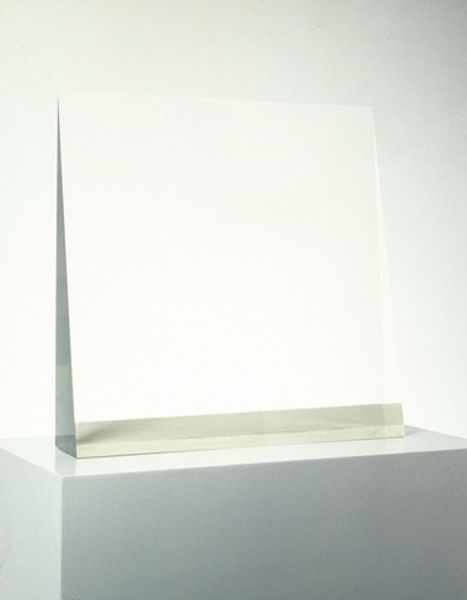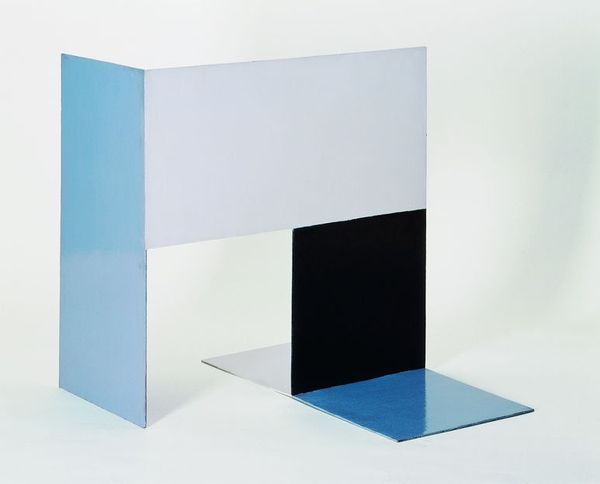
Copyright: Peter Alexander,Fair Use
Curator: Looking at "Perrino" by Peter Alexander, completed in 2009, we see a striking example of contemporary sculpture using glass to explore abstraction and geometric forms. Editor: It feels so…still. There's a calmness to the rigid geometry and the translucent quality. Almost like a frozen moment of reflection. Curator: Peter Alexander was a key figure in the Light and Space movement in Southern California, a movement that significantly influenced artistic trends of the late 20th century, blurring lines between traditional mediums, sculpture, and installation art. Editor: It’s fascinating how he uses such a solid, industrial material to create a sense of ephemerality. The cube sits atop this seemingly simple base that paradoxically elevates its complexity, don’t you think? How does it resonate within that art-historical and societal context? Curator: Think about how much emphasis was being placed on questioning traditional forms, media, and exhibition spaces. Alexander's cube challenges ideas of what sculpture *could* be, while echoing Minimalist geometry, but using materials quite alien to them. It challenges viewers and museum structures as much as his peers did with earthworks and process art. Editor: I appreciate that resistance and Alexander's insistence on something unique and evocative within a very codified space. Its abstraction also suggests a potential political charge. A push towards dematerialization as resistance, if we situate its emergence at the peak of hyper-consumerism. It’s a visual disruption of the spectacle. Curator: Yes, and its form pushes it out of mere aesthetics into social commentary. Alexander challenges our assumptions about perception. The Light and Space artists asked if seeing is merely believing and I believe he questions these visual cues using the socio-cultural history of manufactured landscapes. Editor: Absolutely. It's amazing how such a seemingly simple object can trigger such layered analysis. I find it speaks to the beauty inherent in reduction and conceptual thought. Curator: It really does provoke a powerful meditation on light, space, and form, which reflects, and questions art history, societal structures and institutionalized consumption.
Comments
No comments
Be the first to comment and join the conversation on the ultimate creative platform.
